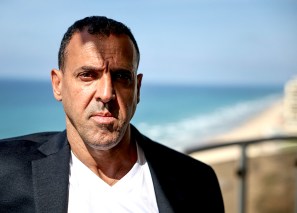There are unintended consequences, and then there are unintended consequences. What we are seeing in Syria, as Aleppo and Hama fall (and Homs braces itself) to a coalition of anti-regime forces whose DNA is to be found in al-Qaeda et al, is an unintended consequence of Israel’s bombardment in Syria of Iran-funded pro-Assad groups, and the pulverising of Hezbollah in Lebanon. An unintended consequence of the weakening of Iran and its Axis of Resistance. For the three pillars on which Bashar al-Assad props up (for the time being) his murderous kleptocratic narco-state – Iran, Hezbollah and Russia – are, respectively, on their ‘best’ behaviour in the hope of talks with the US, broken, or extremely distracted.
It is no coincidence that the assault on Aleppo begun at the same time as Hezbollah and Israel were finalising their highly fragile ceasefire. Those stunning (short-term) Israeli successes in Lebanon seem to have led to potentially stunning (long-term) reverses for the region in the shape of the resurrection of Sunni fundamentalism and a blood-soaked sectarian conflict (Christian Syrians are fleeing from the rebels as fast as they can). The civil war in Syria, once thought to have been ‘frozen’, is now definitely thawed. In the Middle East, what is local is regional; Kurds, Assad loyalists, Shia and Iran-backed militias and Turkey-backed Sunni militants are today fighting in a country that already contains Russian, Iranian, US and Turkish military forces.
In the years since the 2020 Russo-Turkish brokered peace deal regarding fighting over Idlib, the Syrian state has undergone a transformation; it is now the world’s largest producer and exporter of Captagon, a synthetic amphetamine tablet that is wildly popular across the Middle East and currently causing devastation in Jordan and Gulf countries, much to the dismay of those nations’ ruling families. Safe in the receipt of billions of dollars from the drugs trade and with Russian and Iranian support on hand, you could have been forgiven for thinking that until ten days ago Assad was secure in his power for the foreseeable future. Indeed, his distastefully triumphant reappearance at the Arab League summit in Jeddah in May 2023 seemed to confirm this for all the world. But he has only ever been as powerful as Russian, Iranian and Hezbollah support has allowed. The Syrian army has, so far, proven itself to be of the paper tiger variety. It isn’t thought that Assad’s 50 per cent pay rise for his conscript army will have any positive impact on their performance on the battlefield.
This recent Syrian wobble (or topple) couldn’t have come at a worse time for US and Gulf policy makers, who had been, until recently, exploring the possibility of sanctions relief for Assad in an attempt to drive Damascus from the arms of Tehran, and Moscow. From what we can see, Hayat al-Tahrir al-Shams’ (HTS) lightning raid will only cause Assad to cleave closer to his erstwhile saviours, Khamenei and Putin, both of whom have sent men and airpower, respectively. This all presents Western policy makers with the thorniest of problems; which horse to back, if any?
If this situation deteriorates, the incoming Trump administration will be pressured to act. But in which direction, it’s not entirely clear. For throwing its weight in with the anti-Assad rebels could well upset the apple cart even further, creating a monster no one wants or needs. It was Trump who, in 2019, drew back US troops from the Kurdish Syrian areas, leaving the US’s Syrian Kurdish allies at the mercy of Turkish warplanes. And who knows how Russia and Iran would react if they felt an existential threat arising from a potentially failed Syrian state, into which they have both sunk enormous quantities of blood and treasure. Turkey, likewise, despite its uncompromising support for anti-Assad rebels (HTS included) and its simultaneously robust targeting of the Syrian Kurdish groups YPG (whom it sees as allied to its age-old enemy, the Kurdish separatist movement PKK) and the SDF (Syrian Democratic Forces), will need a seat at the table. Russia, for its part won’t countenance the loss of Tartus, a strategically important seaport on the Syrian coast, Moscow’s Mediterranean foothold. And Iran simply can’t lose yet another strategic foothold in the region.
We shouldn’t forget that it was Assad who, in the early days of the Syrian Civil War, released thousands of Sunni fundamentalist prisoners
I wrote in these pages, back in October, that an Israeli invasion of Lebanon could end up creating ISIS 3.0. The fundamental shift of balance across the region created by Israel’s relentless targeting not just of Hezbollah in Lebanon, but also the US-Israeli airstrikes on pro-Assad Iranian-backed militias across Syria have all left Assad’s military vulnerabilities horribly exposed. Were Syria to become a rallying point for the region’s transnational Islamist groupings (and there are literally thousands of ISIS fighters and their children in SDF prisons and refugee camps), ISIS 3.0 could well come to pass. Any triumphalism about the defeat of Hezbollah and Hamas and the weakening of Iran will look rather hollow when set against a rampaging rabble of Sunni Islamists in Syria. Iraq too, for that country relies heavily on the support of Tehran and its affiliated Shia militia groups. And we shouldn’t forget that it was Assad who, in the early days of the Syrian Civil War, released thousands of Sunni fundamentalist prisoners across Syria, whose virulent jihadi ideologies he hoped would bring Iran and Russia to his aid as he cried wolf. The result was ISIS.
Yet it’s important to remind ourselves that HTS sees itself as a Syrian movement, albeit with Islamist roots. Its leader Abu Mohammad al-Jolani, despite having cut his teeth in the fight against US troops in Iraq and then as an al-Qaeda affiliate, since the HTS rebranding, has been at pains to stress that he speaks for all Syrians, across religion and ethnicity. Indeed, in the past few days in Aleppo, there has been cooperation between Kurdish anti-Assad groups, and HTS. This places HTS more in the bucket of a Taliban, or a Hezbollah in that they see their struggle as contained within the borders of the state over which they are fighting. HTS, which broke with al-Qaeda in 2016 is not a transnational group. Small comfort. Especially when we remind ourselves that HTS is the dominant grouping in a coalition of Sunni-Syrian anti-Assad fighters, all of whom bear an Islamist imprint. And loose coalitions of extremists do rather tend to splinter when faced with either catastrophic success, or failure. Where, for example, does HTS go if they succeed in taking the strategically essential city of Homs, through which Iran supplies Hezbollah, and which leaves the road to Damascus open? It’s not clear.
There is always the diplomacy option. But the skeins of this conflict are so tangled that it’s difficult to see where that might begin and where it might end. Not to mention the parallel failures of democracy currently unfolding across the world. Perhaps, if we are to believe what is coming out of Tehran, with Supreme Leader Khamenei signalling (very subtly, of course) that he would be willing to negotiate with the Trump administration, that could be a start point. Perhaps, as has been suggested, Turkish President Erdogan, whose country labours under the weight of some 3 million Syrian refugees, and Assad can find common ground, all the while navigating the seemingly intractable issue of Kurdish irredentism. But with HTS smashing its way down south from Hama, time seems to be of the essence. The monstrous barbarity of the Assad regime and its Iranian and Russian backers is what stands in the way of Sunni fundamentalism and a fresh round of bloodshed in Syrian, and possibly beyond. The Middle East has never felt more fragile. Unintended consequences have rarely been so costly.







Comments